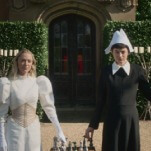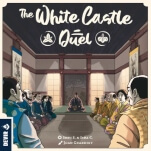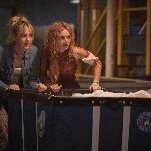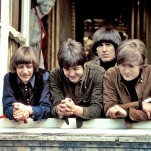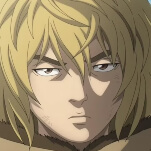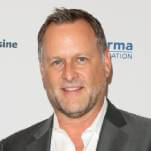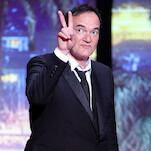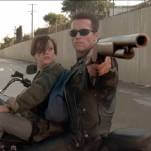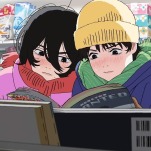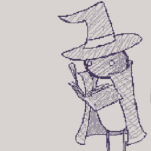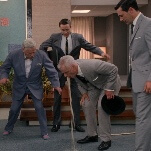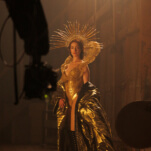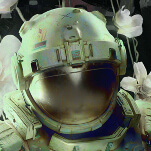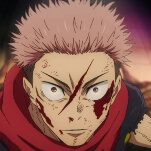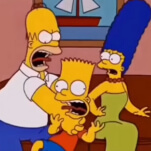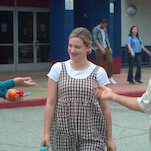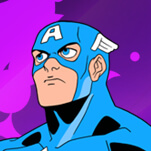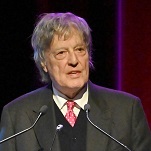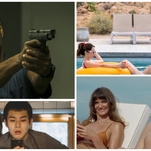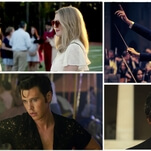When designing the original sprite for Mario, Shigeru Miyamoto focused on every detail to help the character stand out in a busy arcade. His big nose made him recognizable. His red and blue clothes gave him contrast on the screen so you could tell his arms swayed when he ran. Most famously, his mustache and sideburns gave his simple face definition that would have otherwise been impossible. It’s funny how far a few tiny pixels can go toward making a basic, blocky character feel somewhat human. The effect worked, and Mario has maintained cultural relevance for more than 30 years.
To test just how important that hair is to Mario’s character, I’ve removed it from his sprites as seen in three early appearances: Donkey Kong, Super Mario Bros., and Super Mario Bros. 3.
Without hair, Mario’s nose and ear completely disappear, congealing his entire face into a beat-up wad of Silly Putty. His appearance becomes harsh and unappealing. Perhaps some minor indications of his mouth would have been added, but the beautiful thing about that mustache was that he didn’t need a mouth; we just knew it was there. Without the sideburns and mustache, this is just a chubby guy—no charm, no flare. Add the mustache, and you can practically hear his cartoonish Italian accent ordering a pizza pie. Mario’s hair didn’t just soften him, it made him affable.
In much the same manner, Mega Man’s appearance without his helmet in the opening of Mega Man 2 humanized the otherwise mercenary robot. It’s not just that there was a head under that helmet. The visual that better connected players to Mega Man was the flurry of black pixels that made up his unkempt mane. He didn’t have a militaristic crew cut or a meticulously styled pompadour—Mega Man had bedhead. With that brief reveal, the hero was more than just a cybernetic warrior capable of copying the abilities of his defeated foes: He was a boy.
Take away that hair and—well, he’s a whole different character now, isn’t he? A bald Mega Man is more severe and less joyous—utilitarian instead of approachable. That glimpse of his untidy mop made Mega Man feel all the more relatable. He was just like us, despite being a robot.
Most of the time, though, Mario and Mega Man wear hats or helmets of some sort, hiding their hair away for special occasions. Final Fantasy, on the other hand, is a game series that has become synonymous with expressive hairstyles. While the series always had a visual panache, it was only once Tetsuya Nomura took over as lead character designer with Final Fantasy VII that unconventional hairdos became one of Square Enix’s signatures.
Nomura’s first main character, Cloud Strife, would prove to have one of the most iconic coiffures in game culture. The more relaxed and realistic styles—like the surfer boy shag of FF10’s Tidus or the River Phoenix-inspired tousled locks of FF8’s Squall—would become far less memorable, despite the popularity of their games. It seems that, in Final Fantasy as in life, more outlandish hairstyles make for more memorable impressions. Perhaps this is why, for Final Fantasy XIII, Nomura went with a shimmering pink ponytail for its hero, Lightning, and gave the stars of the related Kingdom Hearts and The World Ends With You games gravity-defying flatiron spikes reminiscent of the epochal Cloud Strife.
While those games used hair to help define their characters, others would use a variety of hairstyle options to help players express themselves through their avatars. The Sims, Saints Row, Wii Sports, and tons of RPGs allow players to spend hours customizing their characters’ appearances. Nintendo’s bucolic life simulator, Animal Crossing, took a different approach, though. The character’s look is based on a brief questionnaire at the start of the game. The reveal of your avatar when it arrived in town is often a surprise, but the hairstyle could be changed later on by visiting a salon and answering another questionnaire about how you wished to be perceived by your neighbors.
The result is something akin to a Myers Briggs personality test, wherein introverted characters were more likely to rock ponytails, judging characters were prone to keeping their hair neatly combed, and intuitive characters sported asymmetrical parts. The most recent game in the series, Animal Crossing: New Leaf, includes 32 distinct styles, but locking them behind a personality quiz ensures that the hairdo you end up with represents your nature—or at least the one you want to present to the world.
Hair is also used more forcefully in games, as a tool rather than a decoration or a bridge between player and avatar. For a character like the half-genie Shantae, it’s a weapon. She whips her ponytail as a primary attack in her game series. Bayonetta takes this to another level, using a combination of magic and her extremely long hair to summon demonic aid in combat. The tricky thing about Bayonetta, though, is that her hair is also her clothing. That skintight bodysuit is made of her locks, finely controlled by Bayonetta’s mastery of magic and woven into something that looks more like pleather than fur. As Bayonetta implements more powerful attacks, though, she uses more power from her wig, meaning the bigger the attack, the less “clothing” she appears to wear.
Just as hair helped define and differentiate Mario in saturated arcades, so too does it shape Bayonetta’s identity, both as a character and a game. The combination of hair-driven over-the-top action and empowering sex appeal helped it win over players amid a glut of similar action games. There’s no denying that Donkey Kong, Mega Man 2, Final Fantasy VII, Animal Crossing, and Bayonetta were all excellent works with meticulous design or engrossing narratives. It doesn’t hurt, though, that they all had fantastic hair.
Previously in the Bodies series:

